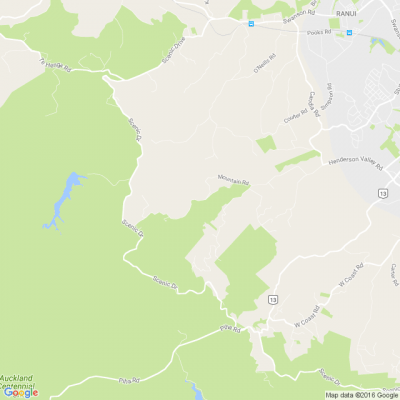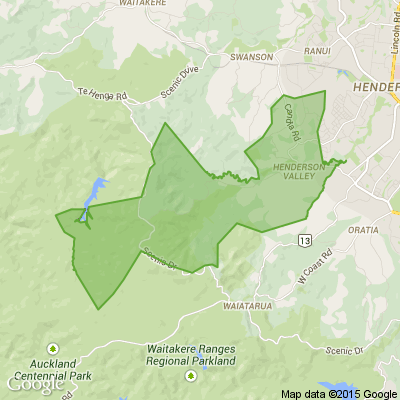Auckland trampers help revive endangered kōkako population
Trampers in Auckland have aided in the revival of dwindling kōkako numbers in a North Island forest, a study reveals.
A four-year survey of the kōkako bird found Pureora Forest Park is the first site nationally to have recovered to more than 1,000 individual birds, while in 1995 there were just seven pairs of kōkako in the area.
Volunteers from the Auckland Tramping Club (ATC) and Howick Tramping Club (HTC) have contributed to pest control operations in the Pureora Forest to protect the kōkako over the past 20 years.
Department of Conservation community ranger Kina Campbell said the two tramping clubs’ continued efforts demonstrate the importance of community contributions to conservation.
“To see the steady growth in the kōkako population is a great reflection in the value of the work being put in by members of these two tramping clubs,” he said.
Trampers carpool to Pureora during kōkako breeding season in spring and early summer, to reduce predators through setting and baiting traps and maintaining bait stations.
HTC spokeswoman Colleen Grayling said between 20 and 25 volunteers regularly give their time and effort, visiting the area up to six times per year.
“The reasons we volunteer are using our outdoor skills and gear for a worthwhile cause, enjoying the bush and birdlife, a chance to hear and see kōkako and the camaraderie of being with like-minded people,” she said.
“Hearing the calls of the increasing kōkako population and seeing the positive survey results drives the involvement. We have definitely had our challenges, but overall, our loyal volunteers’ hard work has paid dividends.”
HTC’s involvement with the kōkako efforts in Mangatutu goes back to 1997, and since 2003 the club has helped with applying for funding, purchasing supplies and administrative tasks to support the Department of Conservation (DOC). ATC has been working in the Tunawaea catchment since 2011.
As a result of the central North Island pest control work, the official status of the kōkako has moved from ‘Threatened’ to ‘At Risk – Recovering’.

Poll: Should drivers retake the theory test every 10 years?
Drivers get where they need to go, but sometimes it seems that we are all abiding by different road rules (for example, the varying ways drivers indicate around a roundabout).
Do you think drivers should be required to take a quick driving theory test every 10 years?
Vote in the poll and share any road rules that you've seen bent! 😱

-
49.5% Yes
-
48.6% No
-
1.9% Other - I'll share below
Here's Thursday's thinker!
I am lighter than air, but a hundred people cannot lift me. What am I?
Do you think you know the answer to our daily riddle? Don't spoil it for your neighbours! Simply 'Like' this post and we'll post the answer in the comments below at 2pm.
Want to stop seeing riddles in your newsfeed?
Head here and hover on the Following button on the top right of the page (and it will show Unfollow) and then click it. If it is giving you the option to Follow, then you've successfully unfollowed the Riddles page.

Why make picking up reserved library books harder? What do you think? Challenge: Write the last stanza for the first poem attached below.
Once books are reserved in Auckland Libraries books, when they are available no longer go alphabetically by customer but instead go into a Holds pickup shelf number based presumably somehow on when each book needs to be picked up by.
I had two books reserved that arrived on two different days in the Blockhouse Bay Library and hence each book has a different shelf number. Hard to find unless you knew the shelf number in the notification email. Even if you knew the shelf number I found myself three books by the same author on the two shelf numbers.
More recently yesterday a book I reserved was on a different shelf number than was specified in my notification email (see image below).
Sadly it is clear from library staff that a numerical system for reserves is here to stay.
I suggest that so that all books for each person has the same shelf number, the shelf number becomes the last digit of a person's library card (0-9).
Within each shelf number a book is found under the day the reserve arrives in the library (01 to 31, hopefully the same date the email is sent).
Since a customer appears to have 10 days to pick up a book, ten days of the month would appear to be required at any time (for each digit 0-9).
Once there are 10 days used the next day's reserves could go back at the beginning of the shelf number after any remaining books not collected (hopefully none) are removed (along with the old day number and the new day number (01 to 31) inserted) after the last day available and future days' books remaining moved forward to make room.
Each day number (01-31) would appear once for each shelf number (0-9) before the first book on that day- perhaps cover an old withdrawn book with paper with each day number on the spine?
When a reserved book arrives in the library the last digit of the library card could be placed on a piece of paper in the book to be removed when it is put on the shelf, to be recycled the next day.
What do you think?
See the image below and page 3 below for a letter appearing in the Western Leader on 9 September:
www.neighbourly.co.nz...









 Loading…
Loading…















